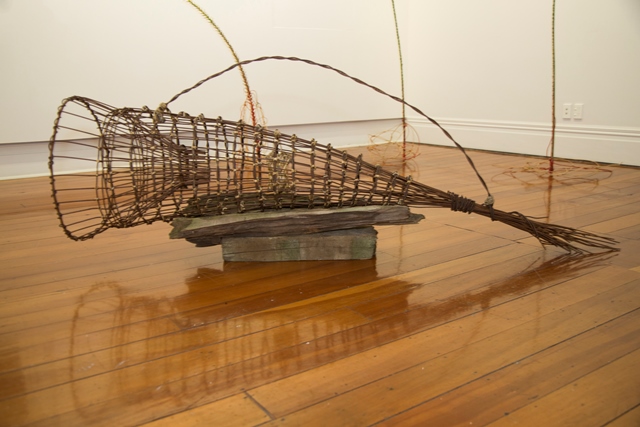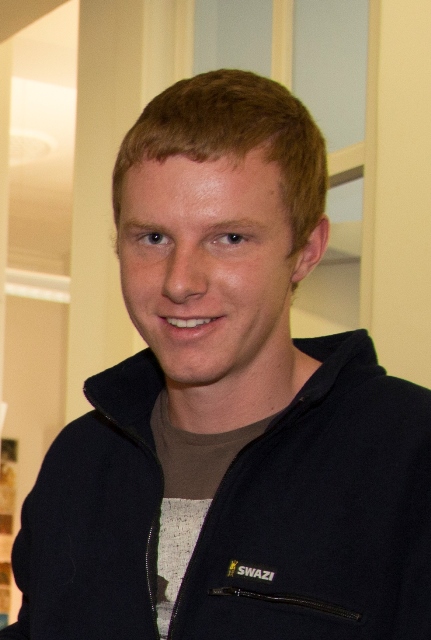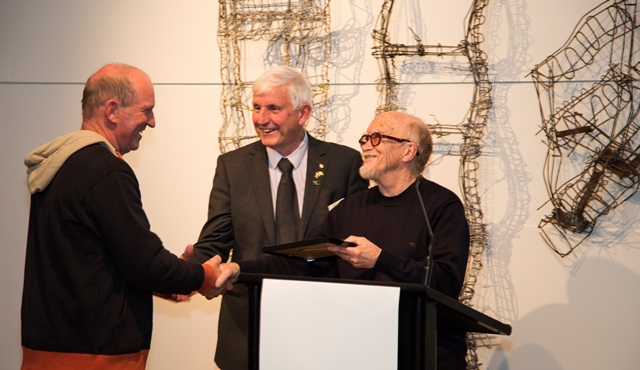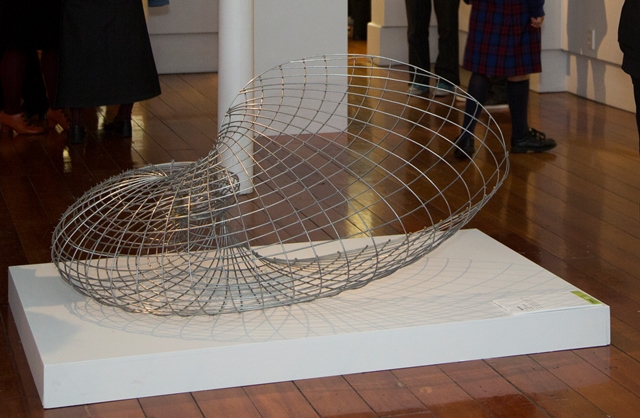Mother and son team wins No 8 wire award
A mother and son who created an eel-trap made of rusty No 8 wire and harakeke have won this year’s Fieldays No 8 Wire National Art Award. (With video.)
Video by Nancy El-Gamel
A mother and son who created an eel-trap made of rusty No 8 wire and flax have won this year’s Fieldays No 8 Wire National Art Award.
Artists Dagmar and Nick Elliott of Te Awamutu won the $8,000 prize money for their ‘Rustic Hinaki’ at the awards last Thursday.

The pair say that eeling is not a thing of the past and this is what inspired their work.
“Our family and friends still enjoy going down to the river at night to try to catch an eel by setting a hinaki. The excitement in the morning to see what we have caught is priceless,” they said in a description of their artwork.

Although Dagmar wasn’t there to collect the award, Nick who worked with her on the winning artwork emailed her with the result.
“She’s still overseas but I think she will be pretty happy,” he said.
It took the pair just over a weekend to create the hinaki and Nick can’t believe they won.
“I don’t know if I will be able to sleep tonight. It hasn’t quite sunk in yet.”
Greer Twiss, who judged the contest, said the decision was a very personal one.
“People don’t just see No 8 wire as some isolated thing, they carry a lot of cultural identity with it.”
He said he didn’t judge the artwork based on how the artists manipulated the material.
“This is more about how you can manipulate an idea of No 8 wire.”

A previous judge and Helensville sculptor, Jeff Thomson, took home second prize after wrapping ladders in wire, burning them away and then moulding them into corrugations.
Jason Dawson, general manager customer relationships Hamilton City Council, was enjoying his second visit to the awards.
“I think some of the artwork here is just as good as last year, even better. Great to see some amazing pieces of art,” he said.
Third place went to a New Zealand colonial inspired entry, ‘War & Peace’ by William Jamieson, a wire sculpture of a gun laid across a rocking chair.

Elliot. Photo: Naomi Johnston
For NZ National Fieldays CEO, Jon Calder, No 8 wire represents the grass roots of Kiwi innovation.
“The No 8 wire mentality is something that Kiwis are pretty unique and renowned for. I think the No 8 wire is a fantastic medium and it lends itself very well to an art competition so we would hope that it [the competition] just goes from strength to strength,” he said.
Fieldays No 8 Wire National Art Award signals the beginning of National Fieldays and Calder spoke of the “buzz” at Mystery Creek event centre in the weeks leading up to the event.
“I think it cements that our ag industry is in a good space, there’s a lot of confidence out there. It’s the backbone of the NZ economy and we are feeling really good.”
He hopes that future contests attract more emerging artists as well as established and prominent ones but for now his staff are trying to convince him to buy a couple of pieces of artwork for the office.
“I think it’s when you dive in and start looking at the inner meanings of some of the pieces that a you really get an insight into what was going through the artists’ mind. [I am] very, very impressed.”
- The finalists’ work will be exhibited at ArtsPost, Victoria Street, Hamilton, until Monday 7 July. Entry is free.




